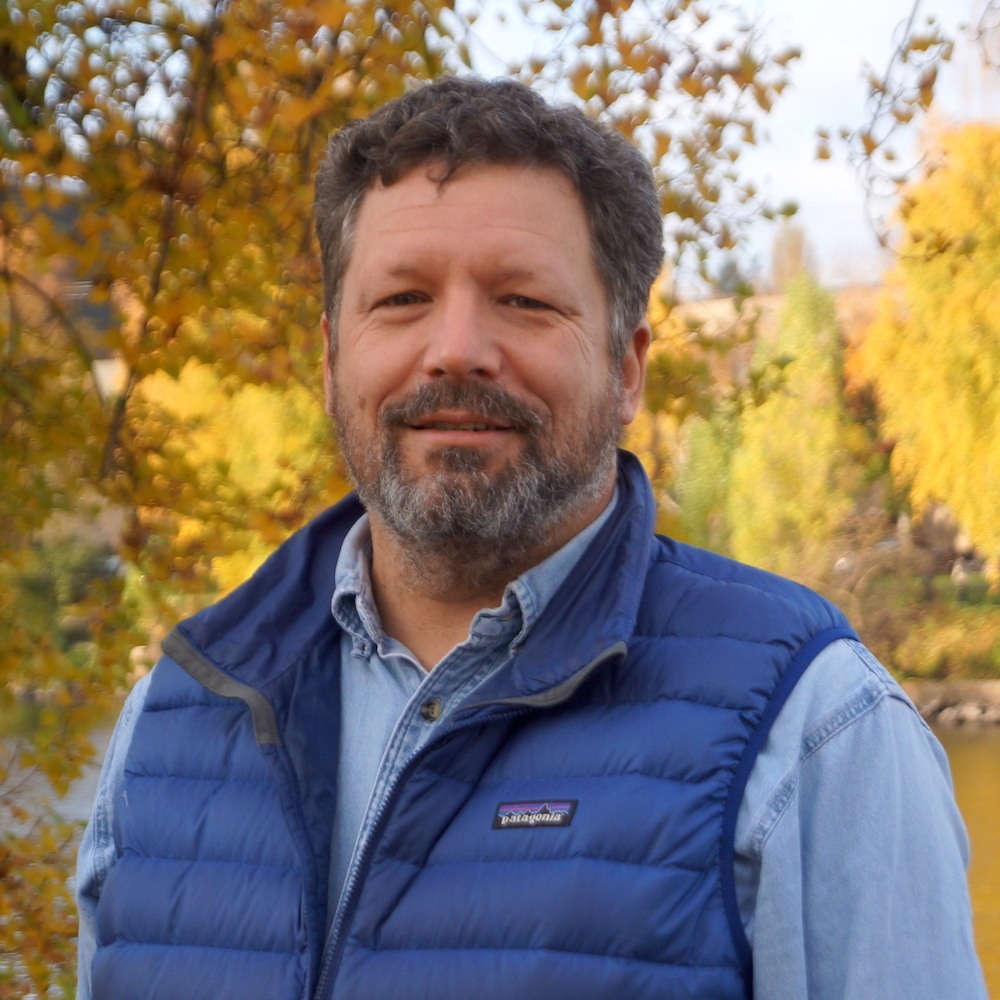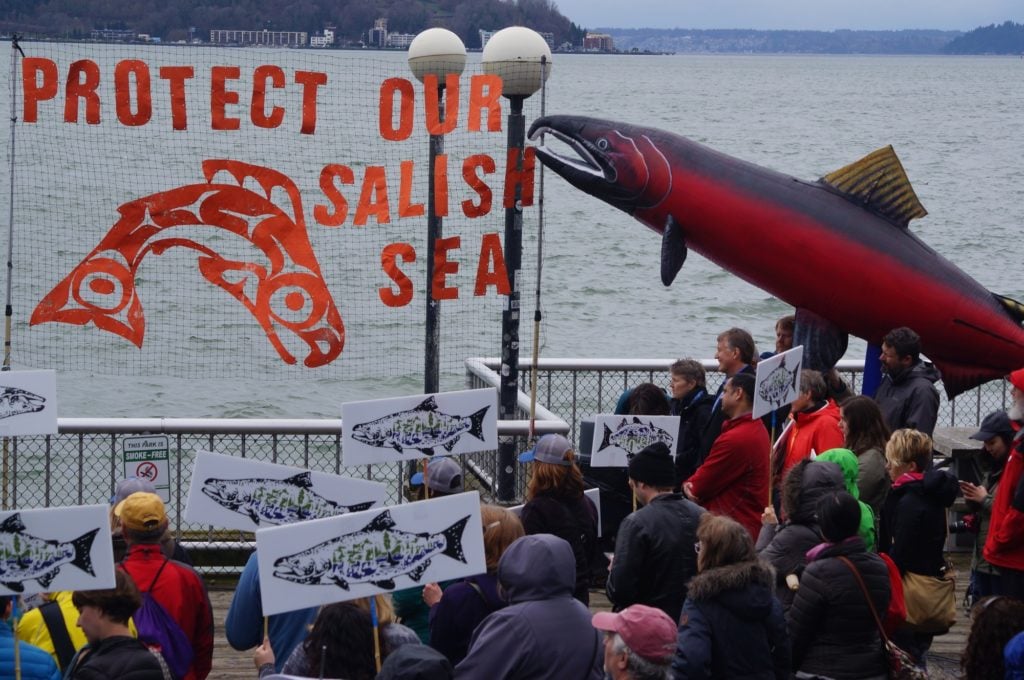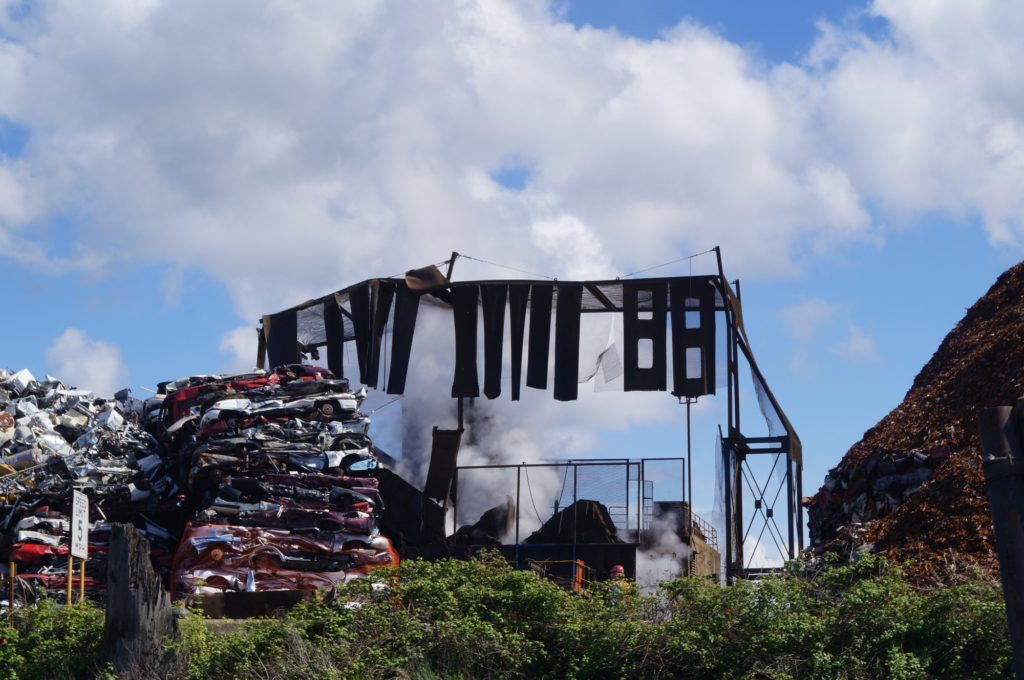Environmental Activism in the Age of Trump
By: ajcarapella

An Interview with Puget Soundkeeper Chris Wilke.
Chris Wilke is the Soundkeeper and executive director of Seattle-based Puget Soundkeeper. In this frank interview he talks with Tyee Bridge, a former Fraser Riverkeeper and writer, about what the Trump era means for environmental advocates and all those who care about clean air and water — and about the “four-pronged” strategy Puget Soundkeeper has employed in tackling toxic pollution.
What is it like to be an activist in the age of Trump?
These are scary times, for sure. With Trump, there’s a kind of double-barrelled issue: first, the destruction of the EPA under Scott Pruitt, and second, the Republican-dominated Congress, which has been emboldened by the 2016 election. Whatever Congress passes likely will get signed by President Trump, so they can go crazier than they did before. And when the House of Representatives passes a crazy bill we can’t always be confident the Senate will stop them.
The reality that facts, and the law, are being thrown out the window right now makes it extra scary. But it’s exciting in that there’s always something for us to do. Our stance now is that we’re going to have to rely on the courts.
So much comes back to the law when it comes to protecting the environment.
That is the one saving grace to all of this. The president doesn’t make law. He implements and executes the law. So, if he doesn’t follow the law — or his subordinates, including the director of the EPA, don’t follow the law — we can win those fights in court. We’ve done it before. If the Trump administration hastily advances policies, in terms of executive orders or via the EPA, those policies are still accountable to law. If they’re not following procedures or overarching statutes like the Clean Water Act, those kinds of orders can be thrown out. We‘ve seen this with the immigration ban, and the approval of the Dakota Access Pipeline at Standing Rock, so that gives us hope.
We did this even under Obama, but it’s all the more crucial under the Trump administration.
It sounds like the possibility of permanent damage exists more from Congress than it does from the president.
To a point. Maybe the most severely damaging thing that Trump has done so far is move forward with reducing the workforce of the EPA by 25-to-30 percent. The plan is to eliminate up to 3,000 jobs.
He’s also called for a 31 percent budget cut there, among many other cuts in many other agencies. And everyone in Congress is kind of saying, “Yeah. Well, that’s dead on arrival, we’re going to have our own budget and restore a lot of that funding.” But destabilization is the goal here, and Trump is accomplishing that.
He’s moving forward with all these lay-offs, and he actually has authority to do this— because you don’t need Congress’s approval to fire somebody. You only need Congress’s approval to hire a bunch of new people. And despite the rhetoric of the EPA being a “runaway agency,” it basically has the same workforce it did in the early years of the George W. Bush administration. It did not increase under Obama. The EPA hasn’t really added any new positions in something like 18 years.
You can only imagine how it feels to be working at the EPA since Trump was elected.
It’s all had a huge demoralizing effect within the agency. I’ve heard there are people crying at their desks there. These are career environmental professionals who are obviously not getting rich. They chose their career because they wanted to protect the environment.
Along with all the firings, Pruitt has introduced a level of surveillance and secrecy that is chilling. Staffers are feeling like everything needs to be said in private conversations; they don’t want to talk on the phone or put things in emails. It’s a really crazy time.
Let’s talk about some of your victories in the past two or three years, and come back to the Trump factor. Puget Soundkeeper has what you call a “four-pronged” strategy in dealing with toxic pollution. What does that mean?
We’re really talking about changing the way toxics are regulated in waterways across the whole state. This is a major problem for us in Washington, especially when it comes to pollutants like polychlorinated biphenyls – PCBs – that bio-accumulate up the food chain. Our famous Chinook salmon have a health advisory on them: for resident Chinook that never leave Puget Sound, you’re not supposed to eat a meal more than twice a month. And that’s our most iconic fish. These are the fish that are swimming by my office right now in the middle of Seattle. Orca whales in our waters, which feed on these same salmon, are some of the most toxically polluted marine mammals on the planet.
So it’s a problem we’re trying to tackle in multiple ways. The first prong was a decision against BP in 2015. We won a ruling in which we challenged the language in a wastewater permit for a refinery, BP’s refinery at Cherry Point. It relates to a WET test, a Whole Effluent Toxicity test, in which a lab exposes fish to the facility’s wastewater effluent, and monitors fish survival. Under the old permit language, BP could kill fish in that water and not be found in violation of the Clean Water Act.
We said this was wrong, and after going through several challenges, the state Court of Appeals agreed with us. In fact the judge really admonished the state, in language that was unusually strong for cases like this, for failing to uphold the public trust. The verdict didn’t only impact BP but changed the permit language that affects many other facilities statewide, including refineries and pulp mills.

You got a similar result in another case dealing specifically with PCBs, right?
Yes. That case represented the second prong of our strategy. It related to a company called Seattle Iron and Metals (SIM), in which we challenged the dilution policy that Washington State’s Department of Ecology had in place. SIM’s facility is on the Duwamish River, which is highly contaminated with PCBs. In fact, after more than a century of pollution, it was finally designated a Superfund site for cleanup as of 2001. The department had said that SIM could have PCBs in their effluent, because the Duwamish would sufficiently dilute them in what are called “mixing zones.”
We said that was ridiculous. You can’t use a river that’s already polluted with PCBs to dilute your PCBs. It’s already reached its assimilation factor. And we got a very similar ruling from a Hearings Board in that case, in which he sided with our point of view. He said pretty strongly to the Department of Ecology that you can’t mandate a mixing zone in a river that is already polluted to capacity — and that such zones should rarely, if ever, be issued for persistent bio-accumulative toxins like PCBs because it isn’t just fish in the mixing zone near the plant that are at risk. Those chemicals end up in Chinook salmon fifty miles away, and in orcas that range even further, or in people eating those fish. So that was another big victory.
The third prong was our victory with fellow Waterkeepers Washington members on the statewide fish-consumption rate. This is part of the human-health criteria of the Clean Water Act, whereby the state determines how much fish people are eating per day, and backtracking from that, how much pollution can be safely discharged into the environment. It gets down to the rate at which people consume fish and the rate at which they’re exposed to toxins, and therefore the rate at which we can safely discharge toxins.
The State of Washington was really in the back pocket of some big industries on this. The allowable fish consumption rate was inadequate, and Washington State regulators were refusing to do anything about it.
What was the consumption rate? Was it based on numbers of fish per year?
It was set at 6.5 grams per day, a placeholder based on an average of the United States’ general population. But the reality is that many specific groups, like native tribes and Asian Pacific Islanders, and also recreational fishermen in general, were averaging much more than 6.5 grams of fish per day in Washington State.
We should be protecting them, and we weren’t. In fact, we were only protecting less than half of the population. We sued the EPA and told them they had to fix the situation, and in this case we had to sue twice, as well. First time we lost; the second time we won, based on a subsequent action by the agency, and established a fish consumption rate that was 27 times greater than what was previously in place, setting a consumption rate of 175 grams a day instead of 6.5 grams a day. It’s still way below what many tribes consume, but it’s on the way to being more realistic.
So then pollution amounts had to be proportionally rolled back?
Exactly. That was a significant win because it means that PCB levels and other chemicals like mercury and arsenic that are measured numerically must be reduced by a factor of about 25 times. So, PCB levels got 25 times more stringent in late 2016.
That’s amazing.
Yeah, it was a big win. So those three prongs taken together are really significantly regulating toxins from point sources in Washington right now – the WET test permits, the mixing zone on the Duwamish River and the fish consumption rate.


But in one of your publications you noted that there was “shadow” over these victories, relating to PCB regulation. What was that?
The shadow side is that in all of this the testing regimes for PCBs are not adequate in the first place. That’s our fourth prong. It’s this issue that many people find very boring but it’s so critical, really, to everything. Basically, it boils down to this: Only a tiny concentration is safe for PCBs. It’s very, very small, down to picograms per liter.
The thing is, the monitoring method presently used by government agencies, called EPA 608, is not able to test at the required level. It can only test for PCB levels literally thousands of times higher than what are are necessary to protect human health. I liken it to driving down a freeway, and you see a sign that says 60 miles an hour; you look down at your speedometer and see that it won’t register any speeds below 70,000 miles an hour. So anything below 70,000 is effectively zero. That’s essentially how we are still measuring PCBs.
How do you change that?
There’s a monitoring method, EPA 1668, which does have much more precision. It’s approved for some scientific uses, but not for pollution discharge permits yet. We think that’s ridiculous. It’s all political. It’s not approved because the industries don’t want it.
These cases are really difficult to bring, because they’re against government agencies, and agencies are entitled to deference. So historically, when a case is a citizens’ group versus a government entity, you have to provide convincing evidence that the government is shirking its responsibilities and not following the science. And wherever there’s any gray area, the courts typically give deference to the agencies on how to implement the laws.
The fact that we were able to overturn three of these already is very significant. But those won’t be complete victories if we cannot get this better testing method approved.
It seems kind of incredible that regulators would allow toxics-testing methods that are so inappropriate, so incapable of measuring to the thresholds they should.
Managing effluent still has so many weaknesses. You have to remember that the Clean Water Act actually envisions that discharges will eventually cease. There was always, since it was instituted in the early ‘70s, a two-tiered strategy with the Clean Water Act. First, reduce toxic pollution, so it’s no longer being discharged in harmful amounts; next, get to the point of eliminating the discharge altogether. Discharge limits are actually seen as an interim step.
Section 101 of the Clean Water Act states the first objective in the whole legislation: “It is the national goal that the discharge of pollutants into the navigable waters be eliminated by 1985.” That’s on the first page of the Clean Water Act.
That’s a hell of a blown deadline for an objective set back in 1972.
That’s what we have to remember: that is the goal. Eliminating discharges. The permitting system was designed as an interim step as we move toward that goal.
Do you see your legal victories as being in jeopardy under the current Trump administration?
Thankfully, no. That’s the good thing about working through the courts. The only real way that these decisions can be undone is if the statute is changed, because these violations are against the existing statute.
Any other advice or encouragement for others who are fighting for a livable future right now?
I would say continue to count the victories. As mentioned earlier, we saw a victory in the case of the Dakota Access Pipeline, for which the Trump administration hastily and erroneously issued an approval. These victories along the way are very important. This sometimes is a game of inches. We’re resisting erosion of our environmental protections and we’re also amassing victories as much as we can.
We all just have to continue speaking to our core values about clean air and water. We know these are very popular with the public. People don’t want to see species become extinct. They don’t want to see people getting sick. They understand the value of clean water. We have to remember to speak to those values, and if we do that, people will be behind us.